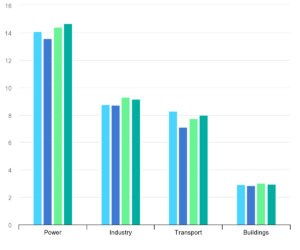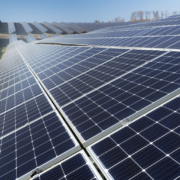How renewables have contributed to reducing carbon emissions
Carbon dioxide (CO2) emissions from energy production have been a major contributor to global climate change, and efforts to reduce these emissions have been at the forefront of climate action initiatives worldwide. According to recent data released by the International Energy Agency (IEA), CO2 emissions from energy production increased by less than 1% in 2022, marking a notable slowdown in emissions growth.
This news represents a significant achievement in the fight against climate change, as energy production is by far the biggest source of greenhouse gas emissions globally. According to the IEA, energy-related CO2 emissions amounted to around 33.7 gigatons in 2022, with around 40% of these emissions coming from the generation of electricity.

The IEA data shows that emissions from the electricity sector remained stable in 2022, thanks in part to the increased use of renewable energy sources such as wind and solar power. Meanwhile, emissions from oil and gas use increased slightly, but this increase was offset by a reduction in emissions from coal.
The decrease in emissions growth is a welcome development, and it demonstrates that efforts to transition to cleaner sources of energy are having a positive impact. Governments and businesses around the world have been working to reduce their carbon footprint through initiatives such as renewable energy deployment, carbon pricing, and energy efficiency improvements.
The use of renewable energy sources has been a major driver of the reduction in emissions growth. According to the IEA, renewable energy sources accounted for almost 30% of global electricity generation in 2022, up from just 16% in 2010. This growth has been fueled by falling costs for technologies such as solar and wind power, making them increasingly competitive with fossil fuels.
The shift towards renewable energy sources is expected to accelerate in the coming years, as governments and businesses increasingly recognize the benefits of clean energy. However, significant challenges remain, such as the need for greater investment in renewable energy infrastructure, and the need to ensure that renewable energy is integrated into existing power grids in a way that is reliable and efficient.
The IEA data highlights the progress that has been made in reducing CO2 emissions from energy production, but it also underscores the urgent need for further action. Despite the slowdown in emissions growth, global emissions are still far too high to avoid the worst impacts of climate change, such as rising sea levels, more frequent and severe weather events, and the loss of biodiversity.
To meet the goals of the Paris Agreement and limit global warming to 1.5°C above pre-industrial levels, emissions must be reduced significantly in the coming years. This will require a sustained effort to transition to cleaner sources of energy, as well as greater investment in research and development of new technologies that can further reduce emissions.
In conclusion, the slowdown in CO2 emissions from energy production in 2022 is a positive development, and it demonstrates the effectiveness of efforts to transition to cleaner sources of energy. However, this progress must be sustained and accelerated if we are to avoid the worst impacts of climate change. The data released by the IEA serves as a reminder that we must continue to prioritize the reduction of greenhouse gas emissions and work together to build a sustainable future for our planet.





